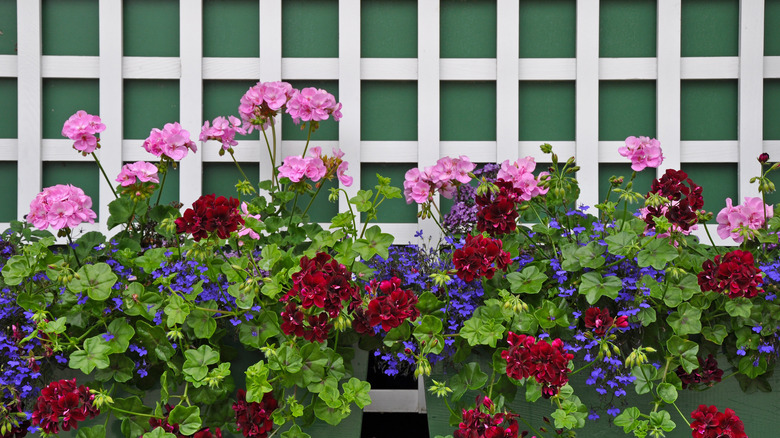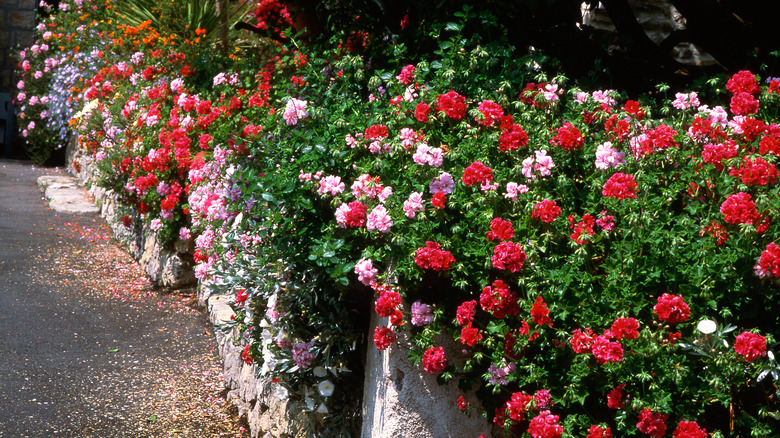Fill A Bare Wall Or Trellis With Stunning Ivy Geranium For Added Patio Privacy
Do you love spending time on your patio but wish you had a bit more privacy? Try planting ivy geranium (Pelargonium peltatum) to create a vibrant, living screen that will last all summer long. This colorful perennial has thick, ivy-like leaves and features clusters of flowers that range from bright white to saturated red. Its stems often reach three feet across, making it ideal for enhancing a trellis or wall. If you don't already have a structure in place, it's easy to DIY a wooden trellis.
It's best to mass ivy geranium in groups for the most privacy. To get the fullest plants — and therefore the most privacy – deadhead regularly and pinch back any growth that has gotten leggy. You can plant your geraniums directly in the ground or use containers for a vertical garden. The trailing plants can easily be trained to climb. Just keep in mind the stems of ivy geranium break easily, so be careful when hanging or adjusting the plants on your structure.
While ivy geranium is not invasive, gardeners should avoid planting shiny geranium (Geranium lucidum), which is invasive in Maryland and can spread quickly and overtake other plants in the garden. Pet owners should use caution, as ivy geranium is toxic to dogs, cats, and horses. Once you're sure you've selected the noninvasive type of geranium and pets are safe from ingesting it, there are many cultivars to choose from. One of the more vibrant varieties, such as deep ruby 'Tomcat' or bright pink 'Vintage Rose,' may also attract hummingbirds to your garden since the birds love vibrant colors.
Planting ivy geranium in containers adds versatility
If you have an unsightly wall and would like to add a little color, place a row of ivy geraniums in colorful terra-cotta pots along the top and let their stems trail down the side. This gives you additional privacy and the bonus of turning an eyesore into a beautiful focal point. You can also place your pots or containers of plants at the foot of the wall and train them to grow upward using a tomato cage as a support.
To ensure your ivy geraniums perform their best, place them on a wall or patio that receives full sun and some afternoon shade. They also need good drainage, so be sure to amend the soil with organic matter such as compost from your garden. Although ivy geranium is a perennial, it is only considered winter hardy in USDA Zones 10 and 11. While some gardeners treat it as an annual and start over every spring with new plants, those in northern climates should consider growing geraniums in containers. This way the plants can be overwintered indoors when temperatures consistently dip below freezing. This might remove your added privacy for a season, but at least your plants won't die off.
Ivy geranium is also sensitive to high temperatures and humidity, and it may need a little TLC in southern climates. The leaves of ivy geranium trap moisture, creating an ideal environment for fungi and bacteria, so the frequent showers and high humidity of Florida, for instance, make growing more challenging. Be sure to wait until fall to plant ivy geranium in this climate, and keep the soil moist but not saturated. If you follow these simple guidelines you can be assured that come springtime, your patio will be blooming with color once again.

